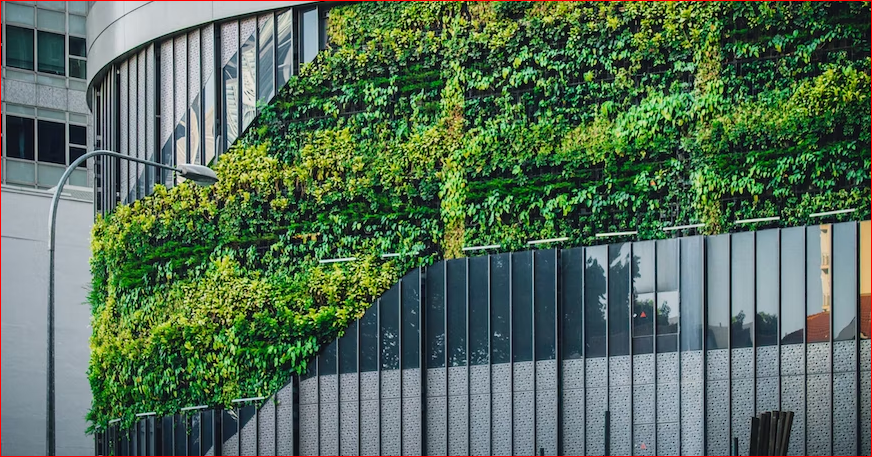Architectural practices help us build our homes, and the profession is responsible for some outstanding structures we see today. However impressive as the work may be, it is essential to consider the sustainability surrounding them. Are they optimizing the use of natural resources? Are they preserving prized forest land? Such questions have criticized architectural practices as the need for more environmental-friendly measures continues to grow.
Sustainable architecture refers to using more conscious practices in all steps involved in a construction process. It will allow for creating more environmentally friendly builds and functional structures that help preserve the surroundings and all essential natural resources. With the need to become more conscious in all steps involved, here’s a look at some of the best ways to bring about sustainability in architecture. Fresher architects or students can take a Parametric Modelling Certification course to understand different techniques that may benefit a sustainable build.
10 Trends That Will Define Future Architectural Designs
- Green buildings with net-zero energy flow: When taking up a building project, the energy efficiency maintained is a vital factor to consider before, during, and after the construction takes place. It means considering energy used by amenities such as lighting, air conditioning, etc. Sustainable architecture aims to create net-zero energy flow, which refers to energy emission on site being equal to energy consumption/
- Vernacular architecture: It refers to taking up constructions that are focused on utilizing native systems and the preservation of cultural significance. There is a requirement that all construction materials can be brought in from immediate surrounding places to a site, thereby reducing the costs of transportation and resource scarcity.
- Public space designs: One of the ways how designers can introduce sustainability in modern architecture is through public space considerations. These are surrounding areas that form a significant part of the construction. Incorporating spaces such as parks, gardens, etc., can help reduce a building’s carbon footprint. It enables the structure to manage its energy emissions that can hinder the natural surroundings.
- Circular economy: When taking up construction projects, following the principle of Reduce-Reuse-Recycle, is an advantageous way of bringing sustainability to buildings. It helps take up architectural processes that align with this principle and can help reduce costs, preserve resources, minimize wastage, and more. Reusing materials like plastic and glass can help curb the amount of discarded materials released into the environment.
- Passive designs: Another way to make buildings sustainable is to locate them in areas where natural ventilation is heavily adequate. It reduces the need to install amenities such as air conditioning, contributing to a carbon footprint. It also helps cut huge costs that designers can otherwise use for extensive research..

- Small-sized builds: While large structures may be appealing to look at, unless necessary, they may not provide the sustainability one needs. Constructing structures with the fundamental necessities makes buildings more functional and adds to sustainability. Choosing small-scale builds helps save land space, natural resources, and costs.
- Biophilic constructions: They refer to designs that incorporate more nature-inspired elements into the architectural builds. It is advantageous for new structures to bring in higher sustainability and contribute toward a greener future. It is beneficial in crowded metro cities where most areas have become concrete spaces without much breathing room. Biophilic builds serve as a city’s lung and give regions a chance to rejuvenate their natural resources.
- Adaptive uses: Through adaptation, it becomes possible to repurpose older structures to fit modern requirements. Buildings can be reutilized for different purposes, which saves the need to use additional land and other natural resources. It also gives existing buildings, e.g., historic buildings, a new chance at life. Such uses are beneficial to bringing about sustainability as it shows us how repurposing can change how construction takes place.
- Prefabricated builds: Another way to achieve more sustainable builds is through modular construction processes. The process has recently gained popularity due to more awareness of building sustainable surroundings. It saves time, money, and resources and still provides the stability and functionality one is looking for in an architectural building.
- Incorporating native vegetation: Making architectural structures more organic can help drive higher sustainability levels. Using natural vegetation at the site and integrating it into a building in a preservational manner allows the saving of such resources without disturbance to the land. Also, planting more trees or bushes native to the site can help improve the environment and contribute to a greener future.
Endnote
Taking up sustainable practices in architecture can help shape the way for the construction of more conscious structures. Architects can work with clients to make them aware of how future sustainable trends can be more advantageous for their builds and improve their lives in the long run.
For More Update Visit TheInspireSpy